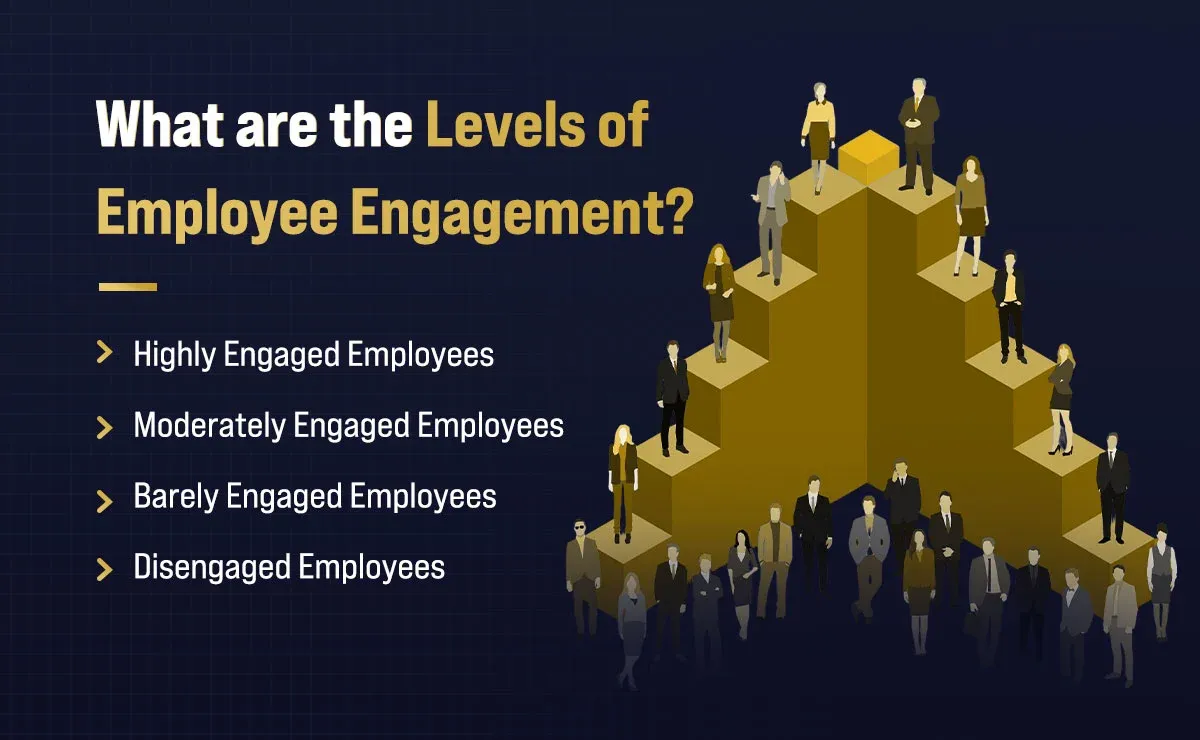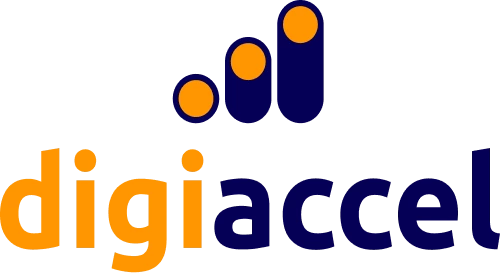What Is Employee Engagement?

As you embark on your professional journey as a new graduate or soon-to-be graduate, you may have heard the term “employee engagement” thrown around in HR seminars, LinkedIn posts, or company orientations. But what does it really mean?
At its heart, employee engagement reflects how motivated and emotionally invested individuals are in their workplace. Employees who are engaged don’t just show up; they bring the right energy, creativity, and a sense of ownership that drives both personal fulfillment and organizational success.
This article explores the intricacies of employee engagement: what it is, why it matters, and offers practical advice on how both you and your future employers can measure and nurture it.
What is Employee Engagement?
At its essence, employee engagement is the depth of an individual’s emotional, cognitive, and behavioral commitment to their work and organization. It goes beyond mere job contentment or happiness at work—it’s a deep dedication to your position, your colleagues, and the overarching aim of your organization. Engaged employees:
- Understand the significance of their role, recognizing how their daily responsibilities align with the company’s larger objectives.
- Feel empowered and valued, knowing their ideas and efforts matter and will be heard.
- Bring discretionary effort, willingly going above and beyond basic job requirements.
Contrast this with someone who is simply “satisfied”—they may enjoy their salary and work environment but lack the emotional or intellectual drive to innovate or advocate for the company. True engagement combines cognitive clarity, emotional connection, and discretionary effort.
What are the Levels of Employee Engagement?
Employees generally fall into four engagement categories. Recognizing these helps organizations tailor strategies—and helps you assess your own engagement and that of future colleagues.

Highly Engaged Employees
Characteristics:
- Positive advocates for the company to friends and on social media.
- Stay even when other opportunities arise.
- Voluntarily take on extra tasks and propose innovations.
Impact:
- Drive productivity, quality, and customer satisfaction.
- Mentor peers and uplift overall team morale.
Moderately Engaged Employees
Characteristics:
- Generally satisfied but held back due to unclear career paths or occasional misalignment with values.
- Meet expectations consistently but seldom exceed them.
Impact:
- Solid performers whose full potential remains untapped.
- Risk drifting toward lower engagement if concerns go unaddressed.
Barely Engaged Employees
Characteristics:
- Do the bare minimum required.
- Lack enthusiasm or emotional investment in projects.
- May quietly explore other job opportunities.
Impact:
- High risk of turnover and absenteeism.
- Can create a silent drag on team energy.
Disengaged Employees
Characteristics:
- Vocal about negative opinions, potentially influencing peers detrimentally.
- Rarely collaborate and may resist organizational changes.
Impact:
- It can harm productivity, innovation, and company culture.
- May even erode customer trust in client-facing roles.
As you enter the workforce, aim to foster your own engagement—seek clarity, voice, growth, and belonging—while also encouraging peers and teams toward higher engagement levels.
Why is Employee Engagement Important?
For new graduates and early-career professionals, understanding the importance of employee engagement can guide your job search and career choices. Here’s why engagement is a non-negotiable for any company that wants to thrive:
- Drives Exceptional Performance: Engaged employees consistently outperform their peers. They tackle challenges proactively, invest discretionary effort, and look for smarter, faster ways to get results. In fact, organizations with high engagement report up to 17% greater productivity.
- Reduces Costly Turnover: Recruiting and training replacements can reach costs equivalent to double an employee’s yearly earnings. Engaged team members stay longer because they feel valued, see clear career paths, and trust their leaders. When turnover drops, companies preserve institutional knowledge and free up budget to invest in growth rather than replacements.
- Enhances Client Satisfaction: A motivated, cohesive team directly leads to superior customer interactions. Engaged employees care deeply about quality and service, so they go the extra mile to solve problems and build relationships. Organizations with highly engaged staff often see higher customer loyalty and stronger Net Promoter Scores.
- Strengthens Team Cohesion & Culture: Engagement fosters open communication, trust, and collaboration. When individuals feel valued and acknowledged, they’re more inclined to collaborate, offer guidance, and uplift their peers. This sense of belonging not only fuels creativity but also makes the workplace more resilient in times of change.
- Enhances Well-Being & Safety: Engaged employees show up more consistently and responsibly. They take ownership of health and safety protocols, leading to 41% lower absenteeism and 70% fewer unsafe incidents. Beyond physical safety, engagement also bolsters mental well-being, reducing burnout and promoting sustained energy.
What are the Benefits of Employee Engagement?
Let’s dive deeper into the tangible benefits of an engaged workplace:
Benefit | What It Means for You |
Higher Productivity | You’ll feel motivated to focus and contribute more efficiently to the task and boost your own performance metrics. |
Improved Retention | Long-term engagement fosters loyalty, meaning your investment in relationships and projects pays off over the years. |
Greater Career Opportunities | Engaged organizations prioritize internal mobility while giving you chances to explore roles across functions. |
Enhanced Skill Development | Continuous feedback and employee development plans accelerate learning, making you a competitive candidate for future roles. |
Healthier Work Environment | Supportive cultures lead to better mental health, ergonomics, and workplace safety, leading to fewer sick days and burnout. |
Increased Recognition & Rewards | Both formal reward systems and informal acknowledgment keep you motivated and valued. |
What are the Top Drivers of Employee Engagement?
Below are the ten most impactful strategies to elevate engagement levels.

Open Channels of Dialogue
When leaders share strategic goals, project updates, and performance feedback on a regular basis, employees feel informed and included. Open communication channels such as weekly team meetings, town halls where questions are welcomed, and an approachable “open door” policy help individuals understand how their work fits into the bigger picture. This transparency diminishes ambiguity, strengthens confidence, and empowers employees to voice innovative ideas or address issues.
Meaningful Appreciation
Acknowledging good work in ways that matter to everyone strengthens motivation. Public praise in a team meeting, a personalized note from a manager, or small rewards tied to specific accomplishments all show that contributions are noticed. When employees see that their efforts lead to genuine gratitude, they are far more likely to repeat those behaviors and to support their peers in delivering excellent results.
Growth & Learning Opportunity
Providing structured pathways for upskilling through in-house training programs, external workshops, or mentoring relationships signals a long-term investment in employees’ careers. When people can chart clear milestones for promotion or mastery of new competencies, they feel reluctant to learn and apply their knowledge. This continuous learning culture not only retains talent but also fuels innovation as employees bring new perspectives to their roles.
Empowerment & Ownership
Empowerment means giving employees real authority over aspects of their work, along with the resources and support to make decisions. When individuals know they can shape processes, experiment with new ideas, and solve problems without waiting for constant approval, they develop a strong sense of ownership. Often, innovation can also stem from employees taking ownership and going beyond their scope of work.
For example, Infosys (one of India’s largest IT services firms) launched a company-wide program called Zero Distance, aimed at empowering employees to drive innovation directly in client projects. Within a year of launch, Infosys reported that over 12,000 project teams had submitted innovation ideas under Zero Distance.
Autonomy and Flexibility
Allowing employees to choose when, where, and how they accomplish their tasks taps into intrinsic motivation. Flexible schedules, remote-work options, or the ability to self-organize project hours help individuals balance personal commitments with professional responsibilities. Autonomy fosters creativity and commitment by giving employees ownership of outcomes. When people have that control, they tend to manage their time more effectively, take fewer sick days, and produce higher-quality work.
Alignment with a Meaningful Purpose
Employees are more engaged when they understand how their daily contributions advance a larger mission—whether it is improving customer lives, supporting environmental sustainability, or driving technological breakthroughs. Leaders can reinforce this by regularly connecting individual achievements back to organizational values and long-term goals, making each task feel significant and inspiring a sense of pride.
Balanced Work–Life Integration
Promoting a balanced separation between professional and personal life mitigates exhaustion and shows sincere concern for staff welfare. Organizations can offer policies such as compressed workweeks, generous family leave, and wellness stipends for fitness or mental health services. When employees know they will not be penalized for prioritizing personal needs, they return to work more focused, creative, and loyal.
Inspirational Leadership
Leaders who model transparency, admit mistakes, and seek input from all levels create a climate of mutual trust. By spending time on the front lines, like participating in team projects, listening in small-group forums, or conducting regular one-on-one check-ins, managers demonstrate their commitment to employee success. This openness cultivates deeper connections and nurtures an environment where everyone feels comfortable participating.
Inclusive Community
A workplace that celebrates different backgrounds, perspectives, and ideas unlocks greater innovation and collaboration. Establishing employee resource groups, hosting cultural awareness events, and training managers on unconscious bias all contribute to an environment where everyone feels valued. Inclusion leads to higher engagement because individuals see that their unique viewpoints make an impact and are welcomed.
Psychological Safety
The foundation of real engagement is a sense of personal security in taking risks and sharing ideas. When the team trusts that errors will be viewed as growth chances rather than reprimands, they’re more likely to suggest ambitious solutions. Creating clear norms—such as encouraging questions in meetings, conducting “blameless” post evaluation, and publicly celebrating experiment-driven failures—helps build that essential trust.
How to Start Measuring Employee Engagement?
Embarking on an engagement measurement initiative begins with a clear roadmap that blends both quantitative data and qualitative insights. Here is an approach you can follow to launch a well-rounded measurement strategy:
- Tiered Survey Framework: Run a comprehensive baseline survey annually or biannually, then follow up quarterly with short pulse surveys on themes like recognition or work–life balance. Use QR codes for mobile access, include a few open-ended questions, add an eNPS item, and apply NLP analytics to quantify comments.
- Regular One-on-One Meetings: Schedule monthly or biweekly one-on-ones where managers and employees discuss concerns, goals, and feedback. These consistent touchpoints build trust, surface issues early, and co-create action plans for improved engagement and performance.
- Small-Group Discussions & Focus Forums: Host guided sessions with 5–8 employees on specific topics revealed by surveys. Use digital collaboration tools to ensure equal participation, capture verbatim insights, and convert qualitative feedback into actionable recommendations.
- Employee Journey Interviews: Gather feedback at key stages—during onboarding, mid-tenure (“stay interviews”), and exit. This lifecycle approach identifies pain points and opportunities for improvement at each phase, ensuring a continuously optimized employee experience.
- Recognition Analytics: Monitor the frequency and types of peer-to-peer and manager recognitions on internal platforms. High volumes of genuine acknowledgment often correlate with stronger engagement, offering a quick, indirect measure of morale and connection.
- Behavioral & Operational Metrics: Track absenteeism, voluntary turnover, eNPS, and other HR metrics alongside engagement surveys. Triangulating these data points provides a holistic view of employee sentiment and identifies trends requiring attention.
- Selective External Support: Engage reputable HR consultancies for survey administration or benchmarking when internal capacity is limited. Retain in-house ownership of analysis and action planning to ensure rapid, context-sensitive follow-through.
- Close the Feedback Loop: After collecting data, share results transparently with employees. Launch targeted initiatives based on priority drivers, then measure their impact in subsequent pulses, turning feedback into continuous improvement.
FAQs
Q1. What is the meaning of worker engagement?
Ans: Employee engagement signifies the emotional dedication and passion that professionals hold for their tasks and employer. Engaged workers feel connected to their role, actively contribute ideas, and willingly go beyond basic job requirements to support the company’s success.
Q2. What is employee engagement in HR?
Ans: In HR, fostering engagement involves crafting a workplace where employees are inspired, appreciated, and in sync with organizational goals. HR drives engagement through initiatives like communication, recognition, professional development programs, and feedback processes to boost retention, productivity, and overall satisfaction.
Summing Up
As you take your first steps into the professional world, understanding employee engagement is more than a just corporate buzz word—it’s your blueprint for long-term success and fulfillment at work. Engaged employees don’t just perform tasks; they innovate, collaborate, and contribute meaningfully to a company’s growth while advancing their own careers.
Whether you’re evaluating job offers or building your career within an organization, look for environments that foster open communication, recognition, growth opportunities, and inclusive cultures. Likewise, be proactive in cultivating your own engagement by seeking purpose, continuous learning, and authentic connections.

